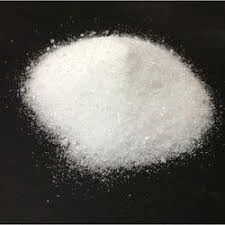Understanding Coating Additives Enhancing Performance and Functionality
Coating additives play a crucial role in the formulation and performance of various coatings used across industries, such as automotive, architectural, industrial, and consumer products. These additives are substances added to coatings, such as paints, varnishes, and inks, to enhance their properties and functionality. This article delves into different types of coating additives, their purposes, and the benefits they bring to the coatings industry.
Types of Coating Additives
1. Surfactants Surfactants are essential additives that reduce the surface tension of coatings. They improve wetting and spreading properties, which is particularly important for achieving a smooth and uniform application. Surfactants can also help stabilize emulsions and dispersions within water-based coatings, enhancing their overall performance.
2. Dispersants Dispersants serve to stabilize pigment particles within the coating formulation, ensuring an even distribution and preventing settling. This is vital for maintaining color consistency and preventing defects during application. A well-dispersed formulation also leads to improved durability and color retention over time.
3. Thickeners These additives modify the viscosity of coatings, allowing for better application control. Thickeners can help prevent sagging and dripping during application, particularly on vertical surfaces. Moreover, they enable the formulation to achieve the desired consistency, making it easier to work with and apply evenly.
4. Biocides Biocides are added to coatings to prevent the growth of mold, mildew, and bacteria. They are particularly useful in environments where coatings are exposed to moisture, such as bathrooms or exterior surfaces. The inclusion of biocides extends the lifespan of the coating and ensures that aesthetic and performance properties remain intact.
5. Flatting Agents These additives help reduce the gloss of coatings, producing a more matte finish. Flatting agents improve the aesthetic appeal of surfaces while also affecting the durability and application properties. They can also improve the hiding power of a coating, allowing for less product to be used while achieving the desired opacity.
6. Catalysts Catalysts are used in many curing systems, particularly in two-component coatings. They accelerate the chemical reactions that occur during the curing process, leading to faster drying times and enhanced hardness of the final product. This property is particularly valuable in high-production environments where time is a critical factor.
coating additives

Benefits of Coating Additives
The incorporation of additives into coating formulations offers numerous benefits
1. Enhanced Performance Additives improve various performance characteristics, such as adhesion, abrasion resistance, and weatherability. This enhances the durability of the coating and reduces the need for frequent maintenance or reapplication.
2. Improved Aesthetics Coatings with the right additives can achieve superior visual qualities, including sheen, color vibrancy, and texture. This is essential for consumer products where appearance is critical to market appeal.
3. Versatility With the variety of additives available, formulators can customize coatings to suit specific applications or environmental conditions. This versatility allows for the production of specialized coatings tailored to unique performance criteria.
4. Environmental Compliance Many modern additives are designed to comply with stringent environmental regulations. This is significant as industries increasingly prioritize sustainability and the reduction of harmful emissions.
5. Cost-Effectiveness By optimizing formulation with specific additives, manufacturers can achieve desired performance levels without significantly increasing production costs. This can lead to economic benefits over time as products require less maintenance and have extended service life.
Conclusion
Coating additives are instrumental in achieving the desired performance and aesthetic qualities of coatings across diverse applications. Their ability to enhance durability, functionality, and compliance with environmental regulations makes them a vital component of modern coating formulations. As technology and materials science continue to advance, the landscape of coating additives will evolve, leading to even more innovative solutions for the industries that rely on them. Understanding and utilizing these additives effectively can lead to improved product quality and greater customer satisfaction.
-
The Application and Significance of Construction RdpNewsMay.19,2025
-
Industrial Grade HpmcNewsMay.19,2025
-
Building Coating Adhesive Building Coating Adhesive HpmcNewsMay.19,2025
-
Application Of Hpmc For Detergent For Detergent In DetergentsNewsMay.19,2025
-
Application Of Hpmc Cellulose In Cement-Based MaterialsNewsMay.19,2025
-
Application Of High Quality Hpmc For Construction In The Field Of ConstructionNewsMay.19,2025




